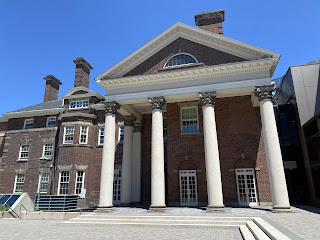After my trip I landed in Toronto and drove immediately back to Bayfield. I was only there for a couple of days, and unfortunately the rainy weather from Newfoundland followed me home but regardless, at the lake is always a nice place to be. And of course the opportunity to catch some more nights of sunsets is something I will never tire of!
Thursday 30 June 2022
The rest of June (Weeks 119-121)
Monday 13 June 2022
Last day - back to Gander
Despite not being a big city, the history of Gander and its airport is very interesting.
In 1936 workers spilled off the train at milepost 213 of the Newfoundland Railway, incredulous that they had been tasked with clearing land for what would become the world’s largest airport, boasting one square mile of tarmac. With the threat of war in Europe, Gander became a strategic post for the Royal Air Force Ferry Command. Too new to appear on maps, the air base remained shrouded in secrecy as some 20,000 North American-built fighters and heavy bombers were transported overseas.
As many as 12,000 British, Canadian and American service people lived in crowded barracks beside and between the runways. After the war, efforts began to move residents a safer distance from the runways and construction began in the 1950s on the present townsite. As the world’s first air-age town, Gander was the province’s firsst planned community, completely built from scratch.
Throughout the ‘Jet Age’ of the ‘50s and ‘60s, virtually every transatlantic flight required a refueling stop at Gander. The airport terminal because a rest stop for the rich and famous, from the Hollywood who’s who to kings and presidents, and ‘star-gazing’ was a popular local pastime. In the ‘70s the Gander airport hosted the first transatlantic test flights of the SST Concorde, and the airport also served as a designated alternate landing site throughout NASA’s Space Shuttle program.
And even more recently when, on September 11th, 2001, all of North America’s airspace was closed by Transport Canada and the FAA, Gander International Airport took in 38 civilian and 4 military flights and accommodated nearly 6,700 evacuees. Residents of Gander and surrounding communities volunteered to house, feed and entertain the travellers as part of Operation Yellow Ribbon.
My last day back in Gander and I had some time before my flight in the afternoon. I thought I’d check out the North Atlantic Aviation Museum.
































































